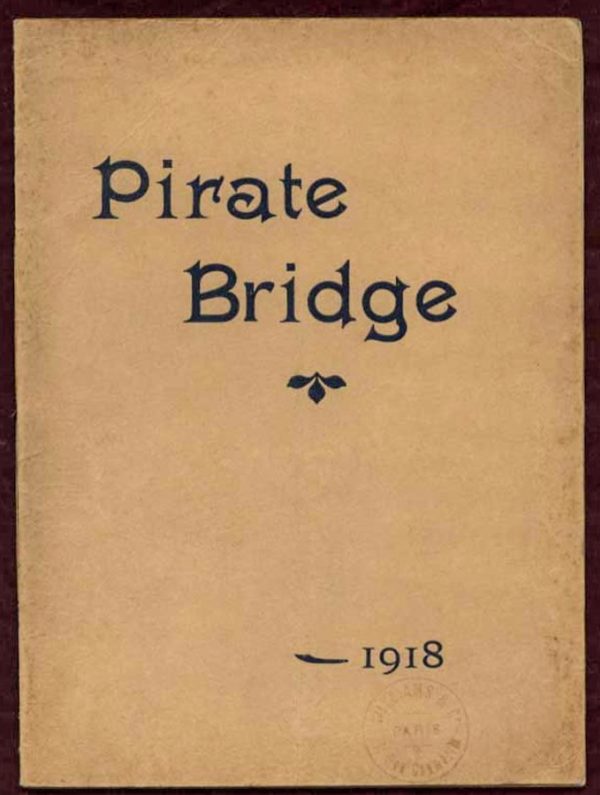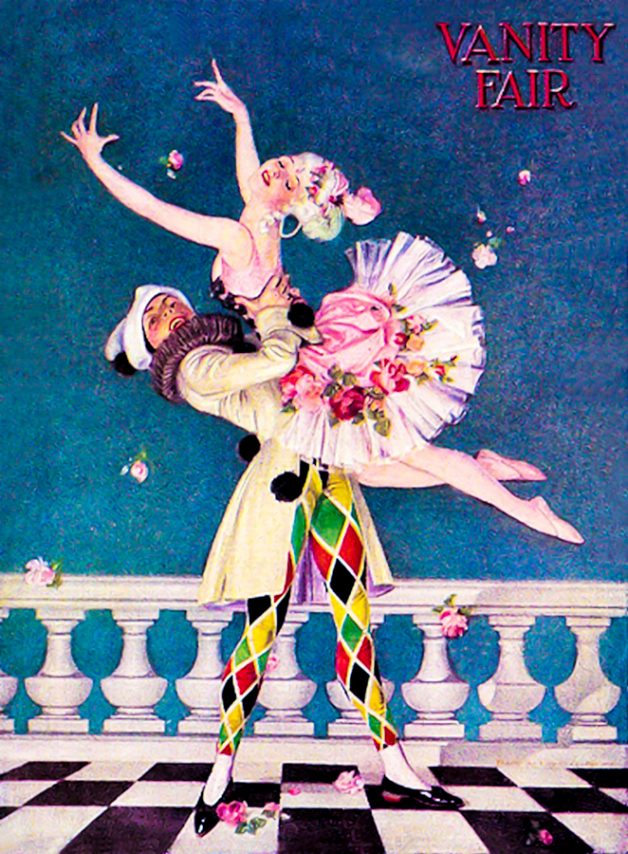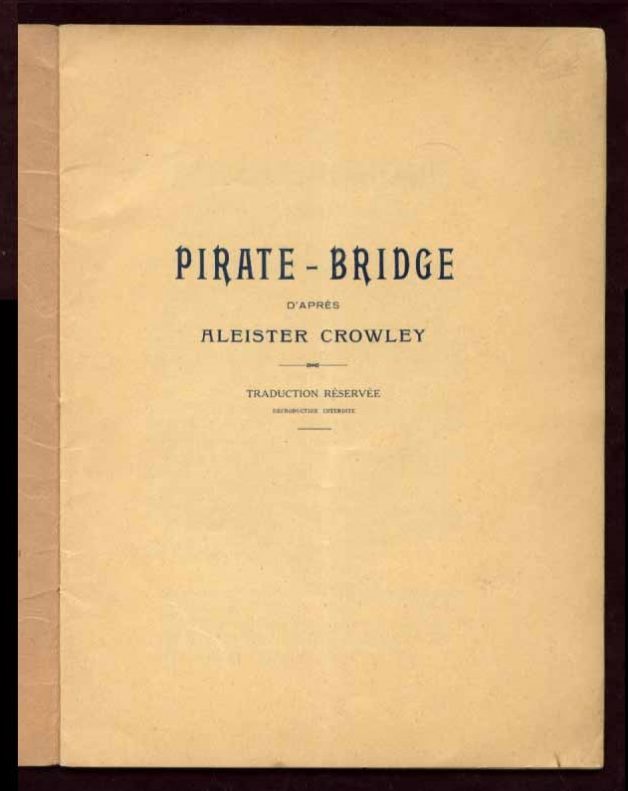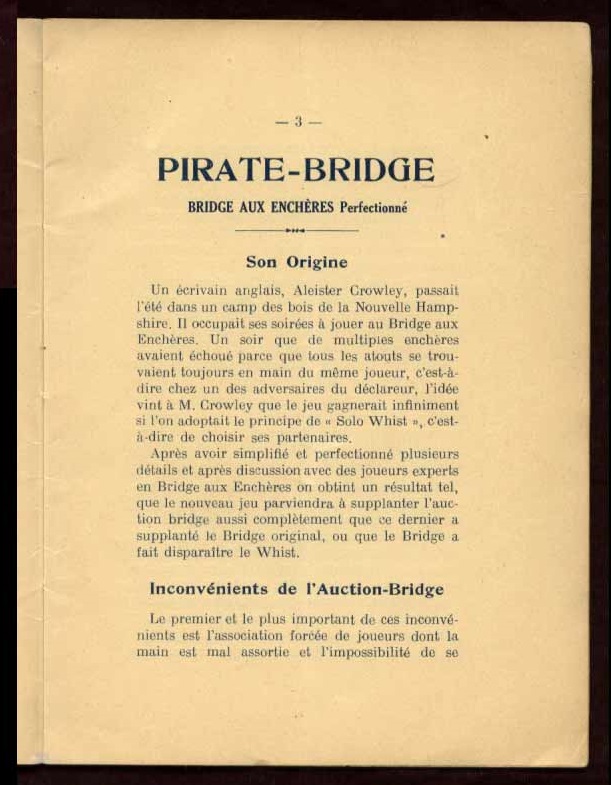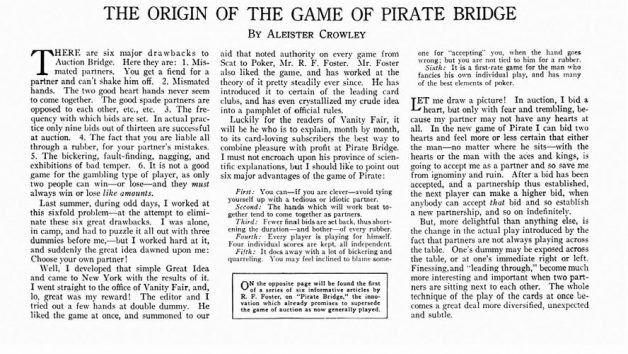A little-known chapter in the life of Aleister Crowley.
In the January 1917 edition of Vanity Fair Crowley introduced modifications to the game of Bridge which he termed “Pirate Bridge” – Though I have never played any version of Bridge, I do know that it is a competitive card game played in teams. It is still enjoyed all over the world today, but was in its heyday during the early 1920’s through the mid-1940’s. Crowley clearly enjoyed the game enough to consider ways of improving play.
Though Crowley’s “Pirate Bridge” was essentially a few minor alterations to the original game it became somewhat of a fad and received much attention from the media. Crowley of course enjoyed being in the spot-light and for a moment the Great Beast was not the world’s most evil man nor the prophet of a new aeon. Instead, he was simply Aleister Crowley the inventor of Pirate’s Bridge, (and also those other things). Speaking fondly of this period Crowley wrote, “I had only to wander into the appropriate circles to make myself the darling of the community.”
Bridge was quite popular during this time, such that international tournaments were commonplace. Because of this Crowley’s “Pirate Bridge” became widely adopted and articles in various publications as well as small booklets would appear in several languages, promoting Pirate Bridge.
The following article was published by the “Dominion” out of Wellington, New Zealand and is dated to the 28th of December 1918 –
“Pirate Bridge”
Bridge players should welcome an authoritative guide to the latest development of auction bridge. Such a work is now provided by Foster’s “Pirate Bridge” (E. P. Dutton and Co., per Angus and Robertson and Whitcombe and Tombs). Mr. Foster is admittedly the best expert authority on card games, more especially the various latter-day developments of the good old game of whist. In an interesting sketch of the history of bridge, Mr. Foster credits a Mr. John Doe, an Anglo-Indian, with having invented auction bridge. It remained, he says, for Mr. Aleister Crowley to go a step further than Doe. The idea of auction bridge was to distribute the privilege of making the trump, giving everyone at the table a chance. Mr. Crowley improved upon this by distributing the privilege of picking the partner who could best support that trump, or who could offer the best defense against it. Instead of having all partnerships decided by their accidental position at the table, his plan was to have the partners select each other by a sort of proposal
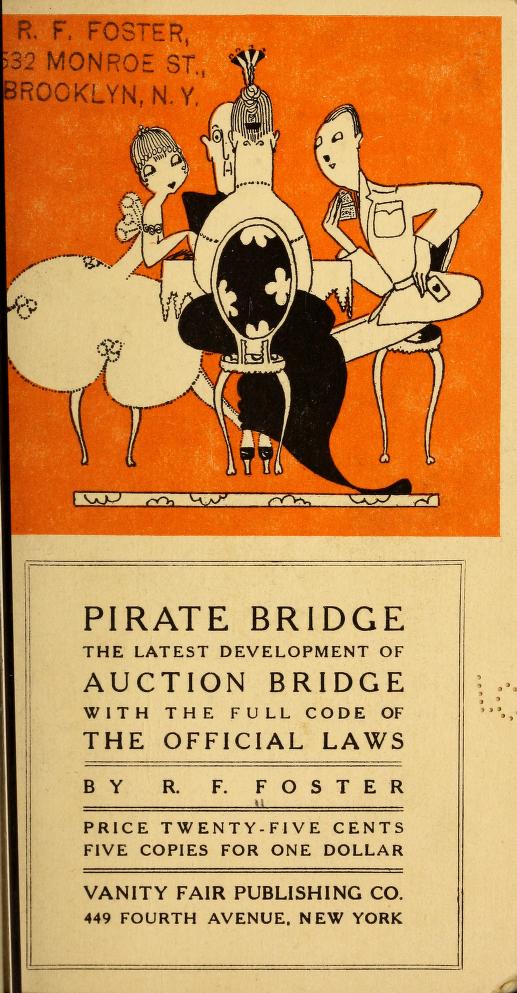
Advertisement for Fosters official Bridge rule book which featured Crowley’s Pirate Bridge. (See “The Argus” article below for more details.)
and acceptance, according to the suitability of their joint hands. Mr. Crowley explained his ideas to Mr. Crowninshield, the editor of the New York weekly “Vanity Fair,” who at once saw its possibilities, christened the new game “pirate bridge,” and introduced it to the card-playing world in a series of articles, the first of which was published in January 1917. Mr. Foster’s work deals with every stage and variation of the game and offers advice as to the best play at each juncture. The chapters on bidding, accepting and refusing unsuitable partners are models of shrewd observational lucidity in expressing the counsel given. The rules of the game are given in full, and several illustrative games are worked out in detail.
(For those who would like to read it – a copy of Crowley’s original article, The Origin of the Game of Pirate Bridge, as published in Vanity Fair, is included below.)
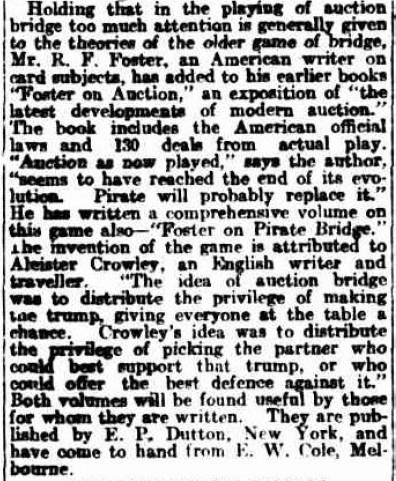
This article appeared on page six of “The Argus” (Melbourne, Vic) on Saturday, October 19th 1918 e.v.

